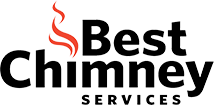Chimney Inspection
Chimney Inspection
Chimney Inspections are one of the most important services we offer; and, one of the most misunderstood. There are several reasons for which we are called to perform a chimney inspection:
- During an annual sweeping
- For the Sale or Transfer of a property
- If there was an operating malfunction
- Upon replacement of a connected appliance
The Chimney Safety Institute of America (CSIA) along with the National Fire Protection Association (NFPA) comprised guidelines for chimney inspections that would be acceptable to both the property owner and the chimney professional, grouping them into three levels.
The standards that these organizations provide can be found in two publications:
- Successful Chimney Sweeping, published by the CSIA, (13-1 – 13-4)
- NFPA 211 Standard for Chimneys, Fireplaces, Vents, and Solid Fuel-Burning Appliances, published by the NFPA, (13.1 – 14.6.3.2)
Boston’s Best Chimney has adopted these standards and we offer the information below to our clients to enable mutual understanding of the term “chimney inspection.”


Level I Chimney Inspection
Access
Readily accessible portions of chimney exterior and interior.
Accessible portions of appliance and chimney connection.
What We Do
- Visually examine the readily accessible portions of the chimney and venting systems
- Access the roof to check for damage not visible from below. (Certain conditions may prevent us from performing a rooftop chimney inspection: i.e. weather, roof pitch, chimney height)
What We Look For
- Combustible deposits in the flue/Obstructions
- Basic appliance installation and connection
- Brickwork integrity/signs of water penetration
- When is this done:
- During annual chimney inspection as required by Section 13.2 of NFPA 211.
- During a routine sweeping of chimney flue
- Upon direct replacement of a connected appliance with one of similar type, input rating, and efficiency.
Indications
A Level I chimney inspection is indicated when verification of the suitability of the chimney for continued service, under the same conditions and with the same appliance or appliances, is needed.
Level II Chimney Inspection
Note: For real estate chimney inspections this is the level of inspection that MUST be performed in accordance with the National Fire Protection Association standards.
Access
- Includes all accessible portions of the chimney exterior and interior.
- Including areas within accessible attics, crawl spaces, and basements.
- Accessible portions of the appliance and chimney connection. Shall include chimney inspection by video scanning or other means of inspection.
What We Do
- Examine the readily accessible portions of the chimney and venting systems
- Access the roof to check for damage not visible from below. (Certain conditions may prevent us from performing a rooftop chimney inspection: i.e. weather, roof pitch, chimney height)
- All accessible areas of the chimney are inspected: attics, basements, and crawl spaces
- Chimney interior is scoped with a chimney camera
What We Look For
- Combustible deposits in the flue/Obstructions
- Basic appliance installation and connection.
- Proper construction and condition of accessible portions of the chimney structure and all enclosed flues
- Proper clearances from combustibles in accessible locations.
- Size and suitability of flues for connected appliances
When Is This Done
- Upon addition or removal of one or more connected appliances.
- Replacement of an appliance with one of dissimilar type in input rating or efficiency
- Prior to relining or replacement of flue lining
- Upon sale or transfer of the property
- After an operating malfunction or external event likely to have caused damage to the chimney
Indications
- When verification of the suitability of the chimney for new or changed conditions of service needed
- When a Level I chimney, inspection is not sufficient to determine the serviceability of the chimney


Level III Chimney Inspection
Note: As can be seen from the level of accessibility mentioned below, Level III inspections are necessary only under severe circumstances.
Access
- Include external and internal portions of the chimney structure
- Shall include removal of components of the building or chimney where necessary
- Removal of such components shall be required only as necessary to gain access to areas that are the subject of the inspection
